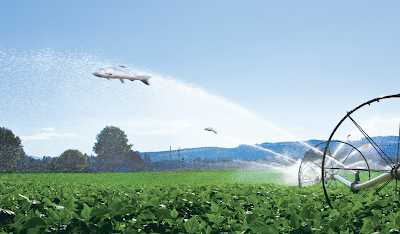The Internet has a warning sign before you enter its doors.
You might not see the sign but, everybody knows what it says.
“CAUTION: In this realm there is no distinction between
truth and lies, and deception will lead you on a goose chase for the right answer.
Enter at your own risk.”
Fact or myth: Recycling is good for the environment? I don’t
know.
The truth is (and this is actually the truth) the only
people that do know are hidden under layers of propaganda inspired by
tree-cutting companies and the companies that make recycled paper.
Let’s say you go to the local office supplies store and you
are trying to decide between recycled paper and “virgin paper” (that is what
they call it). Same price, same quantity. So, wouldn’t you grab the green
stuff? You might even take another package just to feel good about yourself.
One the package there is even a little certification seal saying some small
consumer watchdog company or bureaucratic department with an official looking
initials says it’s indeed green. What happened was (and this is happening all
over the place), consumption is rising because everybody thinks that it’s all
OK since it’s recycled. But, it’s not.
There are more
hazardous by-products from a factory that produces recycled paper than a company
that makes “virgin paper”. Maybe? According to Friends of the Earth, an
environmental campaign based in the England, Wales, and Northern Ireland,
studies on emissions from the companies that produce recycled paper are way
more limited on the tons of studies that are done on virgin paper. That is
understandable, right? Not everyone even knows what recycled paper is. You
might not even.
However, Friends of the Earth goes on to quote two studies
that found that recycled paper is superior in environmental value. What is
interesting though is that this article says “Production of both virgin and
recycled paper gives rise to pollutants which are discharged to water, called
effluents.” Recycled paper and virgin paper both require bleaching or in the
case of recycled paper- deinking. The process is relatively different in the
making of both types of paper since recycled paper leaves a larger amount of
total suspended solids (chemical) and Biological Oxygen Demand (chemical) while
virgin paper leave behind more chemical oxygen demand (chemical).
To make white recycled paper the ink that previously used on
it must be “erased”. This “de-inking”, is what causes the high levels of TSS
and BOD. Also, extra materials like glue and staples are not always disposed of
properly.
Meanwhile, the cutting down of trees and making of paper must
have some effect on the environment, right (sarcasm)?
Our friends at Friends of the Earth say that “According to
Waste Watch, who are part-funded by the UK Government, ‘recycled paper produces
fewer polluting emissions to air and water’.”
In a New York Times article, The Hidden Life of Paper and
Its Impact on the Environment, it states “Because of its consumption of energy,
the industry — which includes magazines, newspapers, catalogs and writing paper
— emits the fourth-highest level of carbon dioxide among manufacturers,
according to a 2002 study by the Energy Information Administration, a division
of the Department of Energy. The paper industry follows the chemical, petroleum
and coal products, and primary metals industries.”
The article names coal as one of the sources of the pollution
because paper companies use it as the highly required energy in this process.
Magazines and newspapers make the paper industry so large
and dangerous. One study conducted by Times magazine found that one copy will
have a 0.29 pound of greenhouse gas emissions effect.
So it is fair to say it is not recycled paper or virgin
paper that is the criminal, but the overall paper industry.
There is that package of paper you bought in my previous
hypothetical. That certification is right by the “8 ½ x 11” on the box.
Here is the weird texture of recycled paper. It comes in
pure white but, writing one something that looks like it was dragged through
the mud just has a cleaner feeling to it. Right?
Here is an ad by one of those recycled paper companies. Hard
to make fun of because it is so ridiculously charming and I feel confused as a
consumer and insecure about my paper selection.
If there is one thing I know, it is that I hate Seventh
Generation. Overall great message but, there products are so watered down and
flimsy that it makes being green look very undesirable for those that buy the
product thinking they will change their lifestyle.
Australia’s Ministry of the Environment offers these solutions to reduce paper impact:
- #60 using electronic versions instead of paper copies
- #61 ensuring your printers and copiers can print two-sided and that this is set as the default
- #62 setting fonts and margins to improve efficiency of paper use
- #63 re-using single-sided copies for rough drafts and notepaper





















